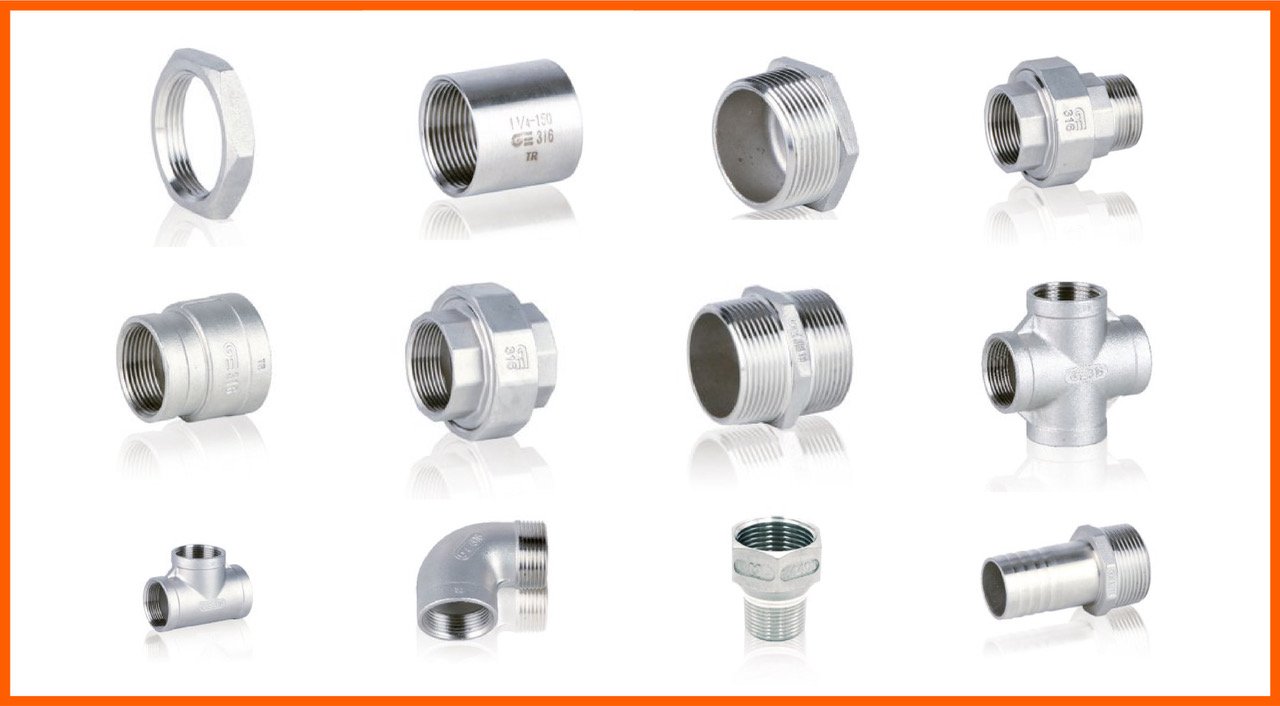Stainless steel plumbing fittings: essential components for the hydraulic system.
The choice of stainless steel hydraulic fittings has several advantages that impact the durability and performance of the system.
It is impossible to think of the creation of a plumbing system without the use of specific fittings. It is these elements that allow the realization of the different connections between pipes or other components, from the simplest to the most complex, allowing the fluid to flow without leaks along the established path.When a professional builds a plumbing system, he or she is clear about the piping system, the issues involved in installation, and the types of hydraulic fittings to be used to meet all the needs that arise during the design phase.
The types of plumbing fittings.
The term plumbing fittings refers to a very general category, within which multiple types of products fall.
Male and female fittings, cross fittings, tees, elbows, caps, plugs, couplings, sleeves, screws, nuts and lock nuts--these are the main items that belong to the world of hydraulic fittings.
Male and female fittings, cross fittings, tees, elbows, caps, plugs, couplings, sleeves, screws, nuts and lock nuts--these are the main items that belong to the world of hydraulic fittings.

Each of these fittings has a well-defined role in the system: the elbow is a bend that joins pipes with mutually perpendicular axes, the cross fitting connects several branches to a single source, the tee fitting connects two pipes in a single flow line. And then there are caps, which are used to close manifolds, or plugs that make it possible to create access points to the system. In short, many types for as many functions, which make up the plumber's daily vocabulary.
Stainless steel plumbing fittings: a quality choice.
We have already dwelt on the virtues of stainless steel and why it represents an added value for the plumbing sector. First and foremost, strength and reliability over time, very important characteristics when we think of the stresses that fittings can undergo during operation. Stainless steel plumbing fittings can be used safely even under particularly challenging temperature and pressure conditions. No less important are hygiene and corrosion resistance, which must be sought in every system but are indispensable in some applications (for example, in the handling of potable water, where hygiene requirements must be maximum). Fittings are components that have significant criticality with regard to chemical attack and rust formation or bacterial deposition. Hence the advantage of stainless steel, in both Aisi 304 and Aisi 316 versions, whose smooth and compact surface is actually immune to the aggression of external agents.The advantage of threaded stainless steel fittings.
In addition to mechanical strength, corrosion resistance and very high hygiene, stainless steel is a material that lends itself well to mechanical processing. That is why threaded stainless steel hydraulic fittings are an excellent solution. Compared with welded plumbing fittings, threaded fittings are more functional. Not only is assembly quick and easy, much more so than welding that requires skilled hands, but threaded is a removable type of connection.Just by unscrewing the part, the system can be serviced in case of maintenance, some failure to be repaired, or simple replacement of components. Of course, the threading must be made with great precision so that dimensions and tolerances set by regulations are met. The most widely used threads in hydraulics worldwide are GAS threads. These are distinguished in turn into conical and cylindrical, regulated by EN 10226-1 and ISO 228-1, respectively.In the first case, the seal is given by the interference between the tapered male thread and the cylindrical female thread; in the second case, however, the male and female threads are both cylindrical and therefore the interposition of an appropriate sealing material is required.
























